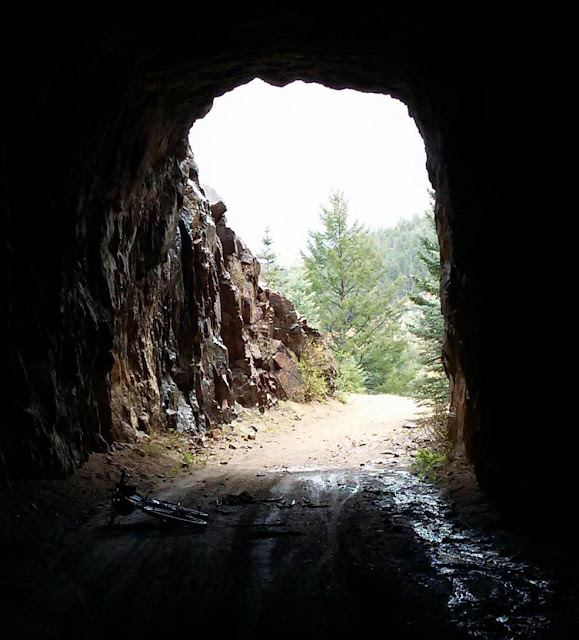How light is to light?
Great setup Marshal. I
like the zipperless gas tank.
I get the distinct
impression from you vetrans light=fast. How light is too light though from a
comfort/safety point of view? Of course you locals will be much more
aclimatised to the cold and can get away with less.
General Riding --Hypothermia is real and in 2014 I saw
several racers flirting first hand with it.
Saw some stupid, risky moves by some upper/mid pack racers.
You need to be able to ride ‘all-day’ in wet, windy,
semi-cold conditions. This means
sufficient layers of insulation for the core.
If you are riding and not stopped, at some point you may (most likely
will) ‘wet-out’ these layers. Once
wetted out the key is wind proof, fitness, food/fuel, experience and course
knowledge. All these factors play
together in making correct judgment ‘safety vs racing’ calls.
My layer system for 2015:
Upper Body
·
Light weight SmartWool undershirt (will be on
start to finish-except when being washed)
·
Standard full zip bike jersey with 3 rear
pockets (will be on start to finish)
·
Ground effect semi-wool arm warmers (always on
but pull up and down as needed)
·
Windproof, water resistant Gilet/vest (I expect
it will be on most of the time)
·
Lightweight rain/windbreaker jacket (Endura FS260
Pro)—this layer is key—it’s packable like a windbreaker but really is a
semi-breathable racing style ‘rain’ jacket (will be on and off for rain and
warmth as needed)
·
Large, loose fitting ‘O2’ style 5 oz rain jacket
(used occasionally during ride time, to be worn over all other layers in truly
nasty/extended conditions or for added warmth when wetted out, also part of
my sleep system)
·
Optional white arm coolers (for hot sunny days,
will buy a pair in Colorado if needed)
Note: my ‘two’ rain jackets weigh same or less than my
single ‘2014’ eVent rain jacket, yet will be warmer when wetted out and much
more flexible/adjustable for changing conditions
Lower Body
·
Ground Effect shorts (really like these shorts—the
no-layer chamois system is truly game changing design imo)
·
Ground Effect semi-wool leg warmers (always on,
pull up and down as needed)
·
Baggy fitting O2 rain pants cut to knee length (fast
pull on/off to keep shorts mostly dry while riding hard, about 2 oz and can
fold up and fit in jersey pocket)
·
Gore Tex full length rain pants (used occasionally
when truly wet & cold, also part of my sleep system)
Head:
·
Helmet
·
Visor’ed cycling cap
·
Sweat band (for ear warmth)
·
Light balaclava (part of my sleep system and
will start off cold mornings with it still on)
·
2/3 Disposable shower caps, over helmet or cap
for rain/wind
Hands:
·
Specialized short finger BG cycling gloves (best
‘heavy padding’ glove available imo)
·
Specialized semi-wool liners (will slip on/off
over short finger gloves often/as needed)
·
2-3 disposable ‘latex’ style gloves (slip on
over short finger or liners, 100% waterproof, but really more for wind/warmth as
they will quickly wet out form inside)
·
ShowerPass rain gloves (use in pouring rain and
when hands are truly cold, also part of my sleep system and early/cold morning/descend
kit)
·
2 Large Ziploc bags (light multi-purpose item that
works remarkably well in pouring rain and cold descends)
Feet:
·
3-strap style Mavic Pulse shoes (still the best
multi-day shoe available--3-strap for adjustability for swollen feet or thicker
socks, lighter than the shoe you use, very grippy sole, just flexible enough for
extended HAB sections, and dries out pretty fast)
·
Ankle length SmartWool socks (one extra ‘dry’ pair
for sleep system)
·
Plastic bags as needed for rain/wind/warmth (I
prefer subway sandwich bags)
Overall thinking on the matter…..
In short-from a safety point of view--if you can keep your
core warm in the worst conditions then you have enough. However this varies quite a bit depending on
experience and fitness. Are you fit
enough to ‘ride’ on thru harsh conditions at night and use the resulting body
heat to keep you warm. Are you
experienced enough to make correct judgment calls, do I continue, do I lay-up,
what constitutes a good stopping location in the backcountry and finally do I
have the know-how to make a fire as a last resort while in wet, windy, cold
conditions?
For typical TDR terrain/conditions my thinking is with my ‘layers’,
if I have food, the will and a functioning bike I can always ride on till I
reach an acceptable stop point.
On the
other hand with my sleep system I feel I can sleep ‘warm-enough’ anywhere on
the route, even in a pouring rain storm.























